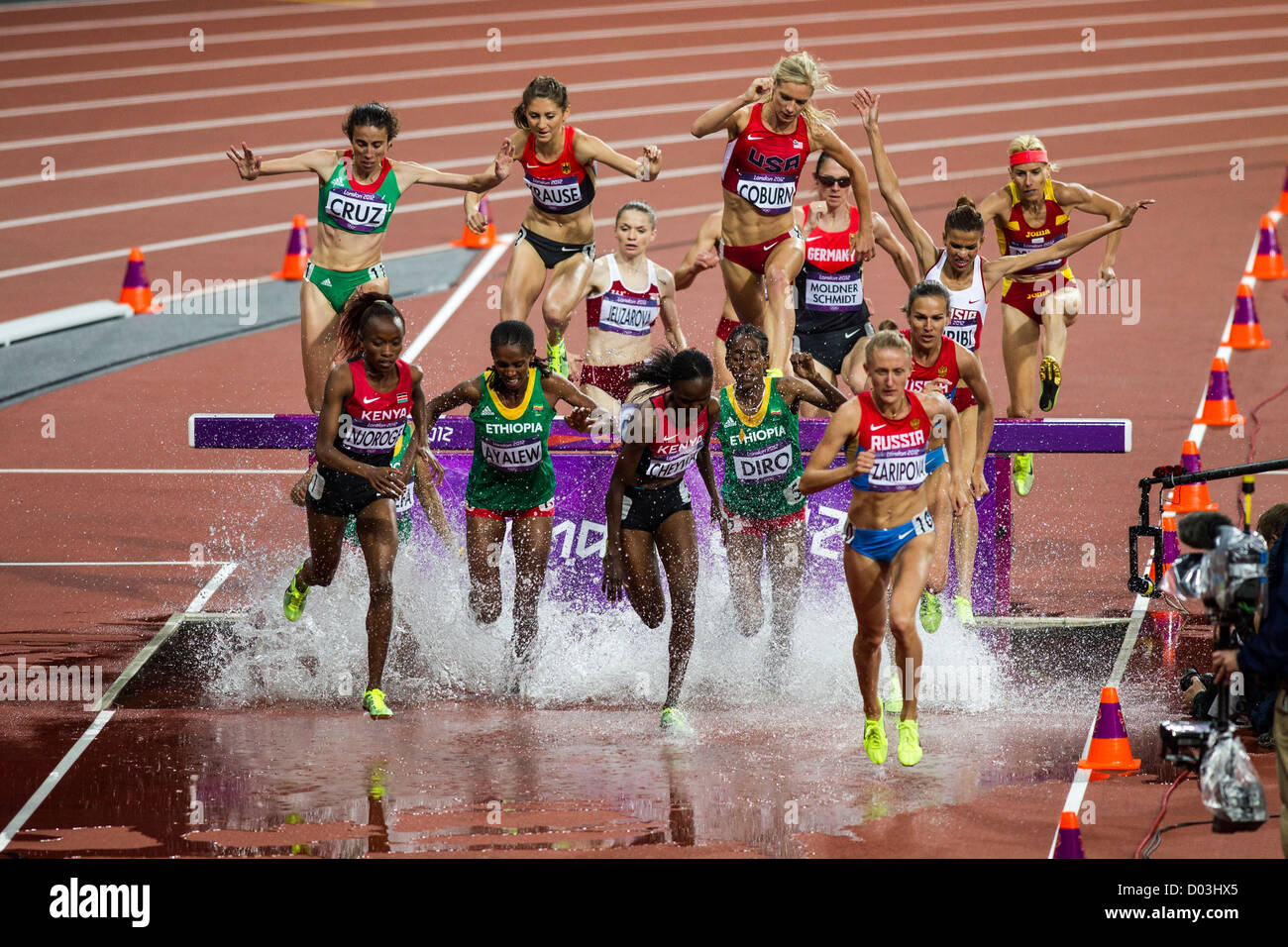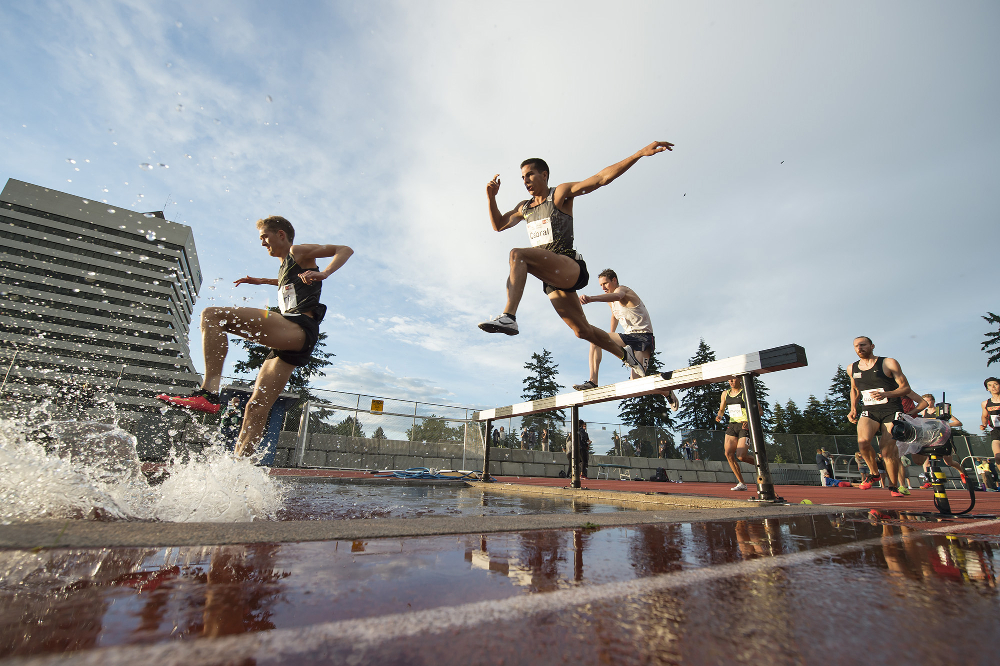Historical Overview of the 3000m Steeplechase in the Olympics

The 3000m steeplechase has been a staple of the Olympic Games since its inception in 1920. Over the years, this grueling race has witnessed significant changes in rules, techniques, and records, while showcasing the athletic prowess of some of the greatest runners in history.
Evolution of the 3000m Steeplechase in the Olympics
The 3000m steeplechase event has undergone several changes since its debut at the 1920 Antwerp Olympics. Initially, the race was held over 3000 meters with 28 hurdles and 7 water jumps. The height of the hurdles was 91.4 centimeters, and the water jump required athletes to clear a ditch filled with water. However, the rules and regulations surrounding the steeplechase have evolved over time.
- In 1924, the number of hurdles was reduced to 24, and the water jump was shortened.
- The height of the hurdles was also reduced to 84 centimeters in 1956.
- In 1984, the water jump was standardized to a width of 3.66 meters and a depth of 76 centimeters.
- The current rules require athletes to clear 35 hurdles and 7 water jumps over a distance of 3000 meters. The hurdles are 91.4 centimeters high, and the water jump must be cleared with both feet in the water.
Notable Athletes and their Achievements
The 3000m steeplechase has been graced by some of the most legendary runners in the world.
- Volmari Iso-Hollo, a Finnish runner, won the inaugural Olympic steeplechase event in 1920. He set the Olympic record of 10:01.4, a mark that stood for 12 years.
- Gunder Hägg, a Swedish runner, dominated the steeplechase in the 1940s, winning two Olympic gold medals in 1948 and 1952. He also broke the world record three times.
- Ken Evans, an American runner, won the Olympic gold medal in 1964, setting a new Olympic record of 8:30.8. His victory marked the first time an American had won the steeplechase in the Olympics.
- Amos Biwott, a Kenyan runner, was a dominant force in the 1980s, winning the Olympic gold medal in 1984 and setting a new world record of 8:05.4.
- Conzelus Kipruto, a Kenyan runner, holds the current world record of 7:53.63, set in 2011. He also won the Olympic gold medal in 2016.
Memorable Moments and Controversies
The 3000m steeplechase has seen its share of memorable moments and controversies.
- In the 1980 Moscow Olympics, the Soviet Union’s Vladimir Krylov was disqualified for illegally jumping over the water jump, which led to a controversial victory for the American runner, Pat Henry.
- In the 1996 Atlanta Olympics, the Kenyan runner, Moses Kiptanui, was considered the favorite to win the gold medal. However, he stumbled on a hurdle and fell, allowing his teammate, Joseph Keter, to win the race.
- In the 2004 Athens Olympics, the Ethiopian runner, Ezekiel Kemboi, won the gold medal in a thrilling finish, edging out his Kenyan rival, Brimin Kipruto, by a mere 0.12 seconds.
Technical Aspects of the 3000m Steeplechase: 3000m Steeplechase Olympics

The 3000m steeplechase is a demanding event that requires a unique blend of endurance, speed, and technical proficiency. Unlike a standard track race, the steeplechase features obstacles that present significant challenges to runners. The event is a captivating display of athleticism and tactical prowess, where the ability to negotiate these obstacles effectively is crucial for success.
Water Jump Strategies, 3000m steeplechase olympics
The water jump is arguably the most iconic obstacle in the steeplechase. The challenge lies in clearing the water barrier while maintaining momentum and minimizing energy loss. Top athletes employ various strategies to tackle the water jump effectively.
- Foot Placement: Athletes typically aim for a landing position slightly in front of the barrier to ensure a smooth transition. The ideal landing spot is a few inches ahead of the edge, allowing for a balanced and efficient takeoff.
- Arm Action: The arms play a vital role in maintaining balance and generating forward momentum. Athletes often use a powerful arm swing, extending their arms forward upon landing to help propel them over the barrier.
- Body Lean: A slight lean forward during the approach helps maintain momentum and reduces the risk of losing balance upon landing. The lean should be subtle and controlled, avoiding excessive forward momentum that could lead to a stumble.
- Water Entry: The water entry is crucial for minimizing energy loss. Athletes aim to enter the water with a smooth, controlled motion, minimizing splashing and turbulence. This helps maintain speed and efficiency.
Hurdle Clearance Techniques
The steeplechase hurdles are higher than standard hurdles, requiring a different approach for clearance. Successful hurdlers employ specific techniques to optimize their hurdle clearance.
- Approach Speed: Maintaining a high approach speed is essential for clearing the hurdles efficiently. This allows athletes to utilize momentum and minimize the amount of effort required to lift their legs over the hurdle.
- Lead Leg: The lead leg is typically extended forward, with the knee bent and the foot pointed towards the hurdle. This helps create a smooth and efficient arc over the barrier.
- Trailing Leg: The trailing leg follows a similar path to the lead leg, ensuring a balanced and controlled clearance. Athletes often use a quick, powerful drive with their trailing leg to propel themselves over the hurdle.
- Body Position: Maintaining a relaxed and upright posture is crucial for avoiding unnecessary strain and maintaining balance. Athletes should focus on keeping their core engaged and their back straight during the hurdle clearance.
Pacing Strategies
The 3000m steeplechase demands a strategic approach to pacing. Athletes must balance the need to maintain a strong pace with the energy demands of the obstacles. Experienced steeplechasers employ various pacing strategies, depending on their strengths and the race situation.
- Even Pacing: Some athletes opt for an even pacing strategy, aiming to maintain a consistent pace throughout the race. This approach allows for a controlled effort and helps conserve energy for the final stages of the race.
- Negative Split: Other athletes prefer a negative split strategy, starting at a slower pace and gradually increasing their speed as the race progresses. This approach allows athletes to conserve energy in the early stages and build momentum towards the finish line.
- Tactical Considerations: Pacing strategies are also influenced by tactical considerations, such as the presence of other competitors and the overall race situation. Athletes may adjust their pacing based on the positions of their rivals and the overall flow of the race.
Running Styles and Strategies
Top steeplechasers exhibit diverse running styles and strategies, each tailored to their strengths and preferences.
- Aggressive Style: Some athletes adopt an aggressive running style, characterized by powerful strides and a high turnover rate. This approach is often seen in runners with strong speed and agility, allowing them to cover the course quickly and efficiently.
- Conservative Style: Others prefer a more conservative style, focusing on maintaining a steady pace and minimizing energy expenditure. This approach is typically favored by runners with exceptional endurance, enabling them to sustain a high level of performance over the entire race distance.
- Tactical Awareness: Steeplechasers also exhibit a high level of tactical awareness, making strategic decisions based on the race situation and the performance of their rivals. They may choose to conserve energy in the early stages, break away from the pack, or respond to a competitor’s move, depending on the circumstances.
Training Elements for Aspiring Steeplechasers
Aspiring steeplechasers must dedicate themselves to a comprehensive training program that addresses all aspects of the event. This program should incorporate elements that enhance endurance, speed, strength, and technical proficiency.
- Endurance Training: Long runs, tempo runs, and interval training are essential for building a strong aerobic base. These workouts help develop the ability to sustain a high level of performance over the 3000m distance.
- Speed Training: Sprint workouts and plyometric exercises help develop speed and explosiveness, crucial for efficient hurdle clearance and maintaining momentum over the obstacles.
- Strength Training: Strength training exercises, such as squats, lunges, and core work, help build muscle strength and power, essential for overcoming the obstacles and maintaining a strong running form.
- Technical Drills: Dedicated drills focusing on hurdle clearance and water jump technique are essential for mastering the technical aspects of the event. These drills help refine form, improve efficiency, and minimize energy loss over the obstacles.
Essential Drills for Mastering the Water Jump and Hurdle Clearance
- Water Jump Drills: Athletes can practice their water jump technique using a variety of drills. One effective drill involves approaching a water barrier at a controlled pace, focusing on proper foot placement and arm action. Another drill involves practicing the water entry, aiming for a smooth and controlled motion to minimize splashing and turbulence.
- Hurdle Clearance Drills: Hurdle clearance drills focus on refining technique and improving efficiency. Athletes can practice hurdle clearance at different speeds, focusing on maintaining a relaxed and upright posture, extending the lead leg forward, and using a powerful drive with the trailing leg. They can also incorporate drills that emphasize rhythm and timing, ensuring a smooth and consistent clearance over the barriers.
3000m steeplechase olympics – The 3000m steeplechase is a grueling test of endurance and agility, demanding athletes to navigate water jumps and barriers with a ferocity that mirrors the wildness of the human spirit. Yet, even after the race is finished, a certain kind of exhaustion sets in, one that craves comfort and repose.
Perhaps, then, a davis leather recliner club chair would be the perfect solace, its plush embrace a counterpoint to the relentless pounding of feet against the track. For in that moment of respite, the athlete can finally reclaim the stillness that was lost in the heat of the race, allowing the body and mind to find a balance once more.
The 3000m steeplechase, a test of grit and endurance, demands a runner to conquer not only the track but also the water-filled barriers. The rhythmic pounding of feet, the splash of water, the desperate gasp for air – it’s a ballet of pain and perseverance.
It’s a reminder that even the most arduous journeys can be softened by moments of comfort, like sinking into a brown leather lift chair after a grueling race, allowing the body to finally unwind and the mind to wander back to the thrill of the finish line.